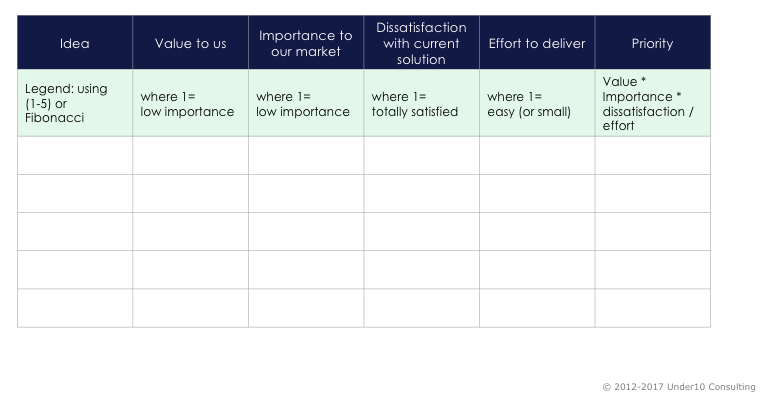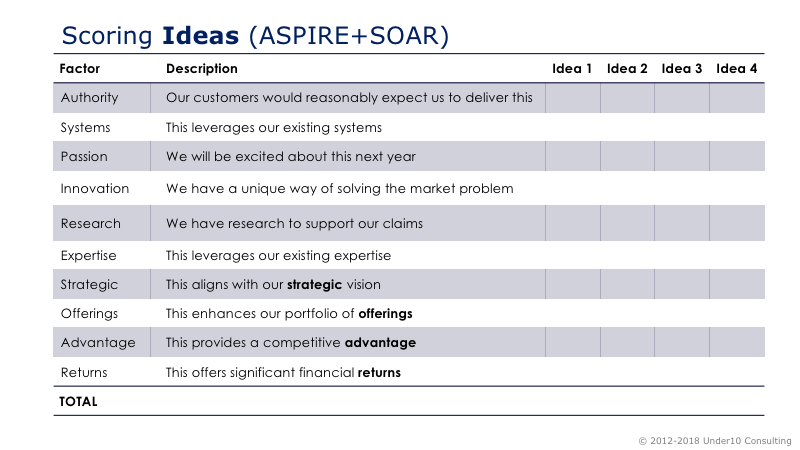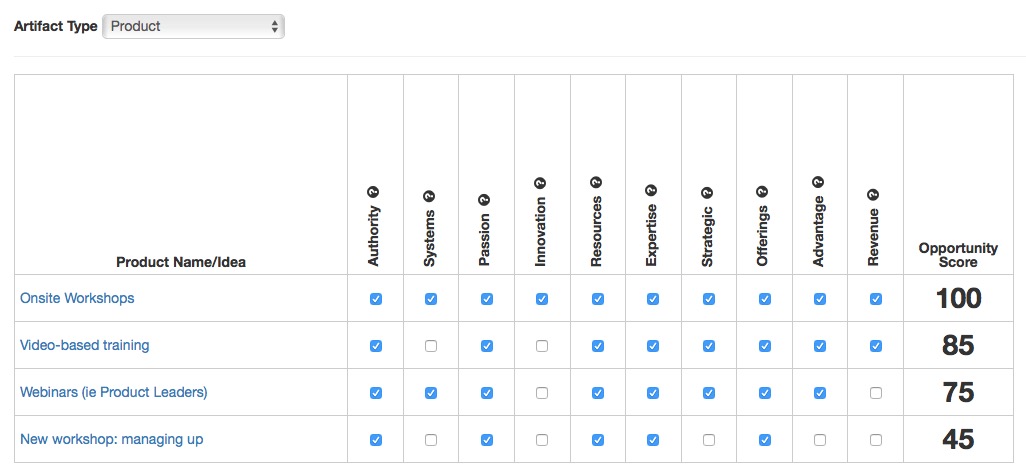
Quick prioritization
by Steve Johnson
Focus on doing a few things really well. Spreading your efforts across too many projects prevents any of them from succeeding.—Steve Johnson, product management evangelist (yes, I’m quoting myself) [Tweet this]
I was in an airport after a conference and watched a fellow passenger groom his backlog. He was old school; he had his stories on index cards. And he was flipping through them, moving some around, making notes on others. Finally, when my curiosity got the best of me, I asked, “Are you grooming your backlog?”
He was surprised I had a clue about what he was doing. We had a nice long discussion about his job, his role in the product team, and his difficulties in knowing how to feed the team with user stories.
The big issue: knowing what to give them next.
Prioritization is a critical skill for product management.Prioritization is a critical skill used for many of the items in your product playbook. The basic tenet of prioritization is to make a list of all the things you want to accomplish and order the list based on value.
We don’t want the product team cherry-picking the list for easy stuff or fun stuff. We always want them working on the most important thing. And we don’t want product managers and product owners just guessing; we want to know that this is more important than that.
It’d be ideal if we can hard facts to work from, like the results of a survey or perhaps the “jelly beans and fishbowl” approach described in my ebook,"On Roadmaps and Roadmapping." But absent hard facts, we ought to be able to use our judgment and simple prioritization scheme.
Here’s one approach…

In this approach, we use a numeric ranking to compare a number of ideas, where goal is to achieve the highest number. Imagine the team discussions you can have determine which idea has more value or importance. To define terms, "value to us" represents the importance to your organization—this could be revenue or cost savings; it could be alignment with strategic or technology initiatives. "Importance to our market" translates to your customers perception of the impact of the problem you solve while "Dissatisfaction" relates to their current status. For instance, while there were times I wanted just a few more characters in Twitter, I wasn't dissatisfied enough for them to spend any cycles expanding the length of a tweet 280 characters. For that matter I've heard of a number of folks who have limited themselves to 140 characters on principle. Finally, the "effort to deliver" embraces the logic that if two things are roughly the same, work on the easier one first—so this format skews in favor of the easy stuff.
While this is a great tool and certainly guides some great conversations, I've converted to a binary model. Answer me this: yes or no. Do we have the authority? Yes or no. Do we have the requisite systems? Yes or no.

Just count up the number of YES answers for a score. Or, you can use this prioritization scheme with low, medium, and high or 1 through 5, or you can use a Fibonacci system. I prefer to keep it simple by using just YES and NO. You can use a similar scheme with roadmap items, products, features, epics, and stories. For that matter, you can use it for promotional items as part of an agile marketing plan.
Here's a screen shot from Under10 Playbook showing this method to compare multiple opportunities.

Are you grooming your backlog by shuffling? Or are you using a quick, objective system?
Whether rating a competitor or a feature or a product idea, objective decisions beat subjective ones every time. [tweet this]

